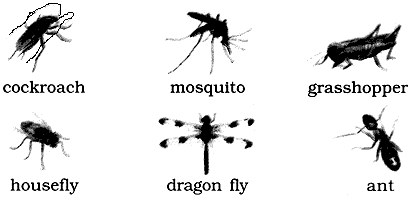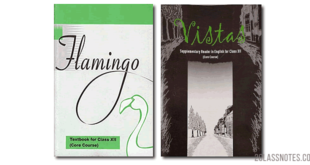The Invention of Vita-Wonk: NCERT 7th CBSE Honeycomb English Chapter 07
Question: Choose the right answer:
- Mr. Willy Wonka is(a) a cook(b) an inventor(c) a manager
- Wonka-Vite makes people(a) older(b) younger
- Mr. Wonka wants to invent a new thing which will make people(a) younger(b) older
The Invention of Vita-Wonk – Answer:
- (b) an inventor
- (b) younger
- (b) older
Question: Can anyone’s age be a minus number? What does ‘minus 87’ mean?
Answer: No, age cannot be in minus because we all start growing up from the moment we are born. ‘Minus 87’ means the man is 87 years back to his actual age.
Question: Mr. Wonka begins by asking himself two questions. What are they?
- What is ………….?
- What lives ………….?
Answer:
- What is the oldest thing in the world?
- What lives longer than anything else?
The Invention of Vita-Wonk – Question:
- What trees does Mr. Wonka mention? Which tree does he say lives the longest?
- How long does this tree live? Where can you find it?
The Invention of Vita-Wonk – Answer:
- Mr. Wonka mentions fir, oak, cedar and Bristlecone pine trees lives the longest.
- Bristlecone pine lives for over 4000 years and one can find them upon the slopes of Wheeler Peak in Nevada, USA.
Question: How many of the oldest living things can you remember from Mr. Wonka’s list? (Don’t look back at the story!) Do you think all these things really exist, or are some of them purely imaginary?
Answer: Mr Wonka has mentioned some very oldest things.
He said he had collected a pint a pint of sap from a 4000 years Bristlecone pine tree, toe-nail clippings from a 168 years old Russian Farmer, an egg laid by a 200 years old tortoise, the tail of 51 years old horse, whiskers of a 36 years old cat called Crumpets, a flea that lived on Crumpets for 36 years, tail of a 207 years old rat, the black teeth of a 97 years old Grimalkin and knucklebones of a 700 years old Cattaloo.
Very few of these things would have really existed, a majority of them are purely imaginary.
Question: Why does Mr. Wonka collect items from the oldest things? Do you think this is the right way to begin his invention?
Answer: Mr. Wonka wanted to create an item that will make people older so he collected items from the oldest things. This is in fact a foolish way to begin an invention.
Question: What happens to the volunteer who swallows four drops of the new invention? What is the name of the invention?
Answer: The Oompa-Loompa volunteers was 20 years old before swallowing the drops, he became 75 years old after it. The invention is name Vita-Wonk.
Question: What do you call these insects in your language?

Answer: Please write there Hindi names yourself. Beetle, Honeybee, Spider, Bee, Butterfly and Moth are some of the insects found in our area.
Question: Fill in the blanks in the recipe given below with words from the box.
shred cooker
times tomatoes
half onion oil
Easy Palak-Dal
Ingredients:
- One …………
One cup dal
Two thin green chillies
………….. a teaspoon red chilli powder.
Eight small bunches of palak - Two ………….
Salt to taste
Wash and cut the vegetables;……….. the palak. Put everything in a pressure ……….. Let the cooker whistle ……….. three then switch it off. Fry a few cumin seeds in …………. and add to the palak-dal.
The Invention of Vita-Wonk – Answer:
Ingredients:
- One onion
- One cup dal
- Two thin green chillies
- Half a teaspoon red chilli powder
- Eight small bunch of palak
- Two tomatoes
- Salt to taste
The Invention of Vita-Wonk – Question: Using Do for Emphasis
Charlie asks, “What did happen?”
This is a way of asking question “What happened?” with emphasis.
Given below are a few emphatic utterances. Say them to your partner. Let your partner repeat your utterance without the emphasis. Your partner may also add something to show she / he disagrees with you.
You: I did study.
Partner: You studied I don’t believe Look at your MARKS!
You: I did go there.
Partner: You went there? Then……………..
You: I do play games.
Partner: …………..
You: He does read his books.
Partner: ………….
You: You do say the most unbelievable things!
Partner: …………..
You: The Earth does spin around.
Partner: ………….
You: We all do want you to come with us.
Partner: ………….
You: Who does know how to cook?
Partner: …………
You: I do believe that man is a thief.
Partner: ……………..
Answer:
You: I did study.
Partner: You studied I don’t believe you. Look at your marks!
You: I did go there.
Partner: You went there? Then how come I didn’t see you?
You: I do play games.
Partner: You play games? Then why don’t you take part in Sports Day?
You: He does reads his books.
Partner: I don’t think so, because he couldn’t answer my questions.
You: You do say the most unbelievable things!
Partner: What makes you think so?
You: The Earth does spin around.
Partner: It spins? Then why don’t I feel that?
You: We all do want you to come with us.
Partner: Is it? Then why no one invited me?
You: Who does know how to cook?
Partner: Not sure, but I don’t know.
You: I do believe that man is a thief.
Partner: It is hard to believe because he looks so innocent.
Question:
- Make a list of the trees Mr. Wonka mentions. Where do these trees grow? Try to find out from an encyclopedia. Write a short paragraph about two or three of these trees.
- Name some large trees commonly found in your area. Find out something about them (How old are they? Who planted them? Do birds eat their fruits), and write two or three sentences about each of them.
Answer:
- Mr Wonka mentioned the name of the following trees
(a) Douglas Fir (b) Oak (c) Cedar (d) Bristlecone PineDouglas Fir is native tree of Western North America. Its scientific name is Pseudotsuga menziesii. It is also called Oregon pine or Douglas spruce. It is named in honour of David Douglas. He was a Scotish botanist and a collector and was the first one to report about the nature and potential of the species.Oak trees are native of Northern hemisphere and include deciduous and evergreen species. It is found in abundance in Northern America with over 90 species found in United States and 160 in Mexico. Oak wood has a wide application because of its resistance to fungal and insect attack.Cedar trees are found in abundance all across the world. Cedar woods have a wide application like used to make pencils. Australian red cedar is highly valued and is used for making furniture and shipbuilding.
Bristlecone Pine trees have some species that are more than 5000 year old and are the oldest known individuals of any species. The tree got its name from the prickles on the female cones. They are found in abundance in United States of America.
- Some of the commonly found trees in our area include eucalyptus, mango, neem, pipal and banyan trees.Eucalyptus trees are very tall in structure. They have medicinal properties and are available in large number in our area.
Mango trees are generally planted in houses for their use in religious purpose. It is also planted in large numbers for the fruit.
Neem is found in houses as well as parks. They have medicinal properties and is widely scattered in all across sour area.
Pipal and banyan trees are mostly found in temples. They are worshiped by Hindus. Some of these trees are over 100 years old.
Question: Find out something interesting about age or growing old and write a paragraph about it. Following are a few topics as suggested as examples.
- The age profile of a country’s population- does it have more young people than old people or vice versa? What are the consequences of this?
- How can we tell how old a tree, a horse, or a rock is?
- What is the ‘life expectancy’ of various living things and various population (how long can they reasonably expect to live)?
Answer: All living beings start ageing from the moment they are born. The best part with the process of growing old is that we are able to witness many changes. India is one of the most populous nations in the world. In India we have more of youth population than old people.
It increases the productivity and earning capacity in the society. We can guess the age of a tree by counting the rings in its trunk. The age of rock and horse can be identified by carbon dating process. Microorganisms have the shortest life cycle.
Insects too live a short life. Animals like elephant and tortoise live more than 100 years. Life expectancy of human is around 85 years.
Question: According to Charlie, what lives the longest.
Answer: According to Charlie a tree lives the longest.
Question: Bristlecone pine trees live the longest. Whom did Mr Wonka asked Charlie to confirm his fact with?
Answer: Mr. Wonka asked Charlie to confirm this fact with any dendrochronologist.
Question: What was unique about the Great Glass Elevator?
Answer: Mr. Wonka used to travel across the world in the Great Glass Elevator.
Question: Whose knucklebones were collected by Willy Wonka?
Answer: Mr. Willy Wonka collected the knuckle bones of a 700 years old Grimalkin that lived in a cave on Mount Popocatepetl.
Question: Where did the old flea collected by Mr. Wonka live?
Answer: The old flea used to live on Crumpets that was a 36 years old cat.
Question: What was special about the Arabian horse?
Answer: The Arabian horse lived for 5 years which is quite unusual for any normal horse.
Question: Mr. Wonka collected whose toe-nail?
Answer: Mr. Wonka collected the toe-nail clipping of a 168 years old Russian farmer called Petrovitch Gregorovitch.
Question: How did Mr. Wonka collected all those ancient items?
Answer: Mr. Wonka went all across the world in his Great Glass Elevator to collect all those ancient things.
Question: Where did Mr. Wonka carry on his experiments?
Answer: Mr. Wonka carried on his experiments in his Inventing room.
Question: On whom did Mr. Wonka tested the oily black liquid?
Answer: Mr. Wonka tested the oily black liquid over an Oompa-Loompa volunteer.
Question: What was the need for Mr. Wonka to invent Vita-Wonk?
Answer: Vita-Wonk had gone wrong. After taking it many people have grown younger to an extent that their ages have gone in minus. All such people have disappeared and will be back only after they spend all those minus years being invisible. To alter these changes Mr. Wonka decided to invent a new drug which will help people to grow older.
Question: Name five ancient things collected by Mr. Wonka.
Answer: Mr Wonka collected a pint of sap from a 4000 years old Bristlecone pine tree, whiskers of a 36 years old cat called Crumpets, an egg laid by a 200 years old tortoise that belonged to the King of Tonga.
He also collected tail of 207 years old rat from Tibet and tail of 51 years old horse in Arabia.
Question: What happened to the Oompa-Loompa volunteer after taking the drops of Vita-Wonk?
Answer: After taking drops of Vita-Wonk, the Oompa-Loompa volunteer began to wrinkle and shrivel. Its hair started falling.
Within no while the changes were visible and he became an old man who looked around 75 years old.
Question: Describe Mr. Wonka.
Answer: Mr Willy Wonka was a strange man. He used to make all strange inventions. He had a subordinate called Charlie. There was Oompa- Loompa volunteers on whom he used to carry out the testing of his inventions.
He had an Inventing Room where he carried out all such mysterious works.
He had earlier invented Wonka-Vite that had made people younger to an extent that their ages have gone into minus and they have become invisible.
He then invented Vita-Wonk after collecting ancient items from across the world which could help people grow older.
Question: Describe the process of invention of Vita-Wonk.
Answer: Mr Willy Wonka travelled across the globe in his Great Glass Elevator to collect items for Vita-Wonk. He collected samples from some of the oldest living creatures in the world. He mixed these items, boiled and bubbled them several times in his inventing room and then invented a one tiny cupful of an oily black liquid. He tested this on a 20 years old Oompa-Loompa volunteer and within minutes it turned into a 75 years old creature. This was how Vita-Wonk was discovered.
Directions – 1 (Q. Nos. 1-6) Read the extract given below and answer the following questions.
“So once again I rolled up my sleeves and set to
work. Once again I squeezed my brain, searching
for the new recipe I had to create age… to make
people old….old…older, oldest…”Ha-ha!’ I cried for
now the ideas were beginning to come. ‘What is the
oldest living thing in the world? What lives longer
than anything else?”
Question: Name the speaker in the above lines.
Answer: Mr. Willy Wonka is the speaker in the above lines.
Question: Who is he talking to?
Answer: He is talking to Charlie.
Question: Why he needs to work?
Answer: He needs to invent a new drug that could help people grow older and alter the changes done by Wonka-Vite.
Question: What is the new recipe he is searching for?
- Recipe for Wonka-Vite
- Recipe for Vita-Wonk
- Recipe for chocolates
- None of the above
Answer:
- 2. Recipe for Vita Wonk.
Question: What is the oldest living thing in the world?
- Cedar
- Oak
- Bristlecone Pine
- Fir
Answer:
- 3. Bristlecone Pine
Question: What lives longer than anything else?
- Cattaloo
- Crumpets
- Petrovitch Gregorovitch
- Trees
Answer:
- 4. Trees
Directions – 2 (Q. Nos. 7-12) Read the extract given below and answer the following questions.
“All over the world, Charlie,” Mr Wonka went on
“I tracked down very old and ancient animals and
took an important little bit of something from each
one of them—a hair or an eyebrow or sometimes it
was no more than an ounce or two of the jam scraped
from between its toes while it was sleeping. I tracked
down the whistle-pig, the Bobolink, the skrock, the
Pollyfrog, the Giant Curlicue, the Stinging Slug and
the Venomous Squerkle who can spit poison right
into your eye from fifty yards away. But there’s no
time to tell you about them all now, Charlie.
Question: What is the quality of venomous squerkle that has been talked about in the passage?
Answer: A venomous squerkle can spit poison right into on eye from 50 yards away.
Question: What does Mr. Wonka say that he has no time to tell about? To whom does he say this?
Answer: Mr. Wonka tells Charlie that he had observed and studied many of very old and ancient animals and collected some parts of their bodies. But he didn’t have time to tell in detail about his expedition.
Question: How did he produce his magic liquid?
Answer: He took some body parts of all very old animals and boiled them together. This is how he produced the magic liquid.
Question: Where did Mr. Wonka take the jam from?
- From the stings of venomous curlicue
- From the paws of whistle pig
- From between the toes of an animal when it was sleeping
- From the mouth of the animals when they were awaken.
The Invention of Vita-Wonk – Answer:
- 3. From the between the toes of an animal when it was sleeping
Question: Which parts of the animal body did Mr. Wonka collect?
- Toes and fingers
- Tongue or sting
- A hair or an eyebrow
- An eye or an ear
The Invention of Vita-Wonk – Answer:
- 2. Tongue or sting
Question: Which of the following animals has not been mentioned by Mr. Wonka?
- Giant curlicue
- A blue whale
- The bobolink
- The stinging slug
The Invention of Vita-Wonk – Answer:
- 2. A blue whale
 Class Notes NCERT Solutions for CBSE Students
Class Notes NCERT Solutions for CBSE Students


